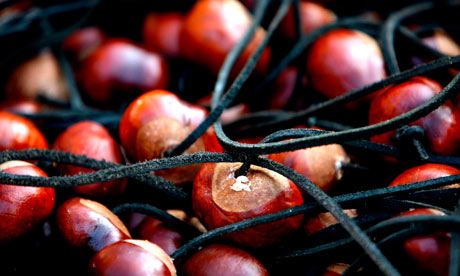
Crocodile handler at the Australian Reptile Park, Tim Faulkner, explained how they would make the enclosure safe again
An Australian crocodile reacted badly when a noisy lawnmower invaded his space - he stole it, forcing keepers to make a daring rescue.
Elvis, who lives at the Australian Reptile Park, lunged at the mower, grabbing it from operations manager Tim Faulkner and keeper Billy Collett.Pulling it under water, the five-metre saltwater crocodile "drowned" the machine at the park near Sydney.
He then sat and watched his catch for more than an hour in his enclosure.
''Once he got it, he just sat there and guarded it,'' said Mr Faulkner. ''It was his prize, his trophy. If it moved, then he would attack it again.''
That, he said, was fairly typical crocodile behaviour.
But Elvis, who is one of the largest crocodiles in New South Wales, is also ''a big territorial male'' who likes his meat.
While the keeper lured Elvis to the other end of the enclosure with an offering of kangaroo meat, Mr Faulkner was able to jump in, retrieve the badly chewed up mower and two teeth that Elvis had lost in the process.
''He has extraordinarily large teeth - much bigger than most crocodiles,'' added Mr Faulkner. ''He punched his teeth through the top casing of the mower.''
'Ate his girlfriend' Elvis, who was captured in the wild and is thought to be around 50 years old, has always been a cranky croc. He was attacking fishing boats in Darwin harbour when he was caught, his keeper said.
 Elvis guarded his lawnmower for more than an hour
Elvis guarded his lawnmower for more than an hour ''He is so full of testosterone that he views everything as a threat,'' explained Mr Faulkner. ''Even potential mates.''
The mower was fortunate to have escaped then. But it will never work another day.
As for Mr Faulkner, it was all in a day's work.
''I've handled a lot of animals,'' he said. ''There is a moment when your breath is gone and your adrenalin rushes in.''
But, he stressed, there is difference between a crocodile getting a mower and getting a human.
''That has never happened. We treat the crocodiles with a lot of respect,'' he added.

































